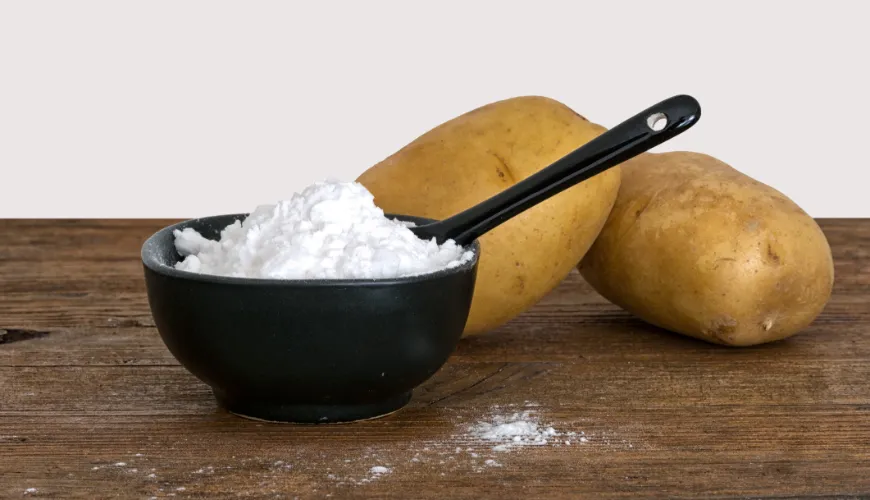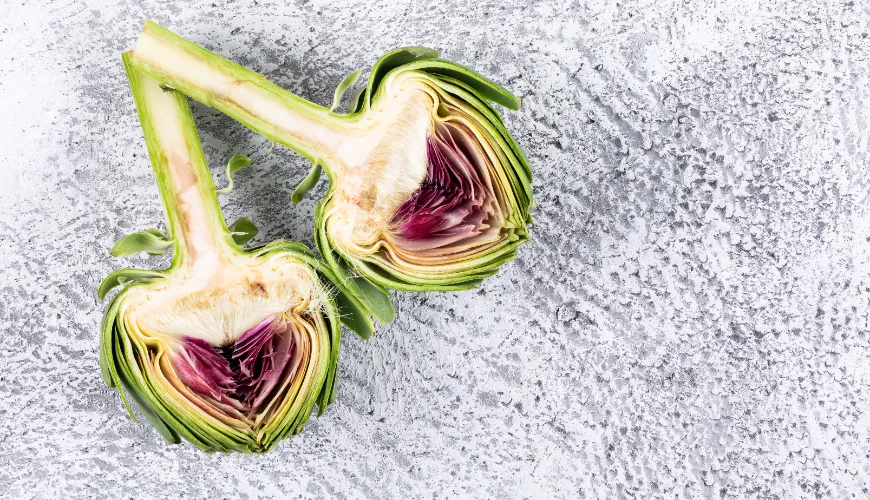
Discover the Secrets of Resistant Starch

In today's world, where healthy eating is becoming increasingly popular, many of us focus on various trends and diets that promise us better health, a slim figure, and more energy. However, there is one dietary component that is often overlooked, even though it could play a key role in our overall health – resistant starch. What exactly is it? Why should we pay attention to something that at first glance may sound like an ordinary carbohydrate? Let's take a closer look at this phenomenon.
What is resistant starch?
Resistant starch (RS) is a special type of carbohydrate that is not digested in the small intestine and thus reaches the large intestine intact. There, it serves as food for beneficial bacteria that ferment it and convert it into short-chain fatty acids, such as butyrate. This process plays a crucial role in maintaining a healthy gut microbiota, which significantly impacts overall health. There are four main types of resistant starch. RS1 is found in foods like whole grains and seeds, where it is enclosed in cell walls and resists digestion. RS2 is present in raw foods such as raw potatoes and green bananas. RS3 is formed when starchy foods like potatoes or rice are cooked and then cooled, transforming the starch into a resistant form. RS4 is the result of chemical modification by the food industry. All these types of resistant starch share a common benefit for gut health and overall well-being, making them a valuable part of the diet.
Why is resistant starch important for our health?
Resistant starch is more than just another term that appears in discussions about healthy eating. Its regular consumption can bring many benefits that can significantly improve our health. What makes resistant starch so special, and what specific benefits can it offer?
One of the most significant benefits of resistant starch is its ability to support gut health. The gut microbiota, a collection of bacteria living in our intestines, plays a key role in the proper functioning of the immune system, digestion, and even affects our mood. When resistant starch reaches the large intestine, it becomes food for these beneficial bacteria. These bacteria ferment resistant starch and convert it into short-chain fatty acids, primarily butyrate. Butyrate is particularly important for gut health because it has anti-inflammatory properties and supports the regeneration and proper function of the intestinal lining. It is thus crucial for maintaining a healthy intestinal barrier that protects our body from harmful substances and infections.
Another significant benefit of resistant starch is its impact on improving insulin sensitivity and controlling blood sugar levels. With a growing number of people suffering from type 2 diabetes and other problems associated with high blood sugar levels, this property of resistant starch is very important. Research suggests that regular consumption of resistant starch can increase the body's sensitivity to insulin, meaning the body can better regulate blood sugar levels. This effect can play a key role in the prevention and treatment of type 2 diabetes and simultaneously reduce the risk of heart disease.
Resistant starch also significantly contributes to promoting a feeling of fullness, which can help reduce overall calorie intake. Feeling full after a meal is important for those trying to maintain or reduce their body weight. Studies show that foods rich in resistant starch can lead to lower calorie consumption throughout the day, which can be useful for weight management. This effect is partly due to resistant starch slowing down digestion and increasing the production of hormones that signal satiety.
Overall, resistant starch represents a valuable dietary component that can have a profoundly positive effect on our health. Whether it's improving gut health, increasing insulin sensitivity, or supporting satiety, incorporating resistant starch into our daily diet is a step toward better health and wellness.
How to incorporate resistant starch into your diet?
Now that we know how beneficial resistant starch is, it's important to find out how to incorporate it into our daily diet. There are several simple ways to increase its intake. Start by consuming raw starchy foods such as green bananas, raw potatoes, or chestnuts, which are rich in RS2. If raw potatoes aren't your preference, you can grate them and add them to a smoothie. Another step is to prepare foods and then cool them, such as cooked and cooled potatoes or rice, which contain more RS3. You can prepare, for example, potato salad, which is a great source of resistant starch. Including whole grains and seeds like oats, quinoa, or whole-grain bread will add RS1 to your diet, which supports gut health. Legumes, such as beans, lentils, and peas, are another excellent source of resistant starch, which is also rich in proteins and fiber. If you are unable to get enough resistant starch from common foods, you might consider dietary supplements that contain this valuable component.
Myths and misconceptions about resistant starch
As with many other dietary components, there are various myths and misunderstandings surrounding resistant starch. It's important to clarify these misconceptions to better understand the true benefits of this carbohydrate.
One widespread myth is that resistant starch is just another fad in the world of nutrition that will eventually fade away. However, this view is mistaken. Research shows that the benefits of resistant starch are not only real but also long-lasting. Moreover, its consumption is a natural part of diets in many cultures around the world, confirming its importance for health.
Another common misconception is the belief that all carbohydrates are bad and should be eliminated from the diet. Today, carbohydrates are often demonized, leading to the erroneous conclusion that we should avoid them entirely. However, it is important to distinguish between different types of carbohydrates. While refined sugars and highly processed foods can be harmful to our health, resistant starch is among the "good" carbohydrates that can significantly contribute to improving our health.
Some people also worry that consuming resistant starch causes bloating or flatulence. While it is true that some individuals may experience these symptoms, it is often a temporary phenomenon related to the adaptation of the gut microbiota to increased resistant starch intake. It is recommended to increase its intake gradually so the body can adjust and minimize unpleasant symptoms.
Thus, it is not only safe but also very beneficial for our health if consumed correctly and with consideration of individual needs.
Resistant starch is a hidden treasure in the diet that can significantly improve our health. It supports gut health, improves insulin sensitivity, and increases satiety, which can lead to reduced calorie intake. How can you easily incorporate it into your diet? Simply consume raw starchy foods like green bananas or raw potatoes, or enjoy cooked and cooled foods like potatoes and rice. Whole grains, seeds, and legumes are also great sources. Is resistant starch just another trend, or a true health enhancer? Scientific studies show that its benefits are real and long-lasting. Include it in your diet and feel the difference.

